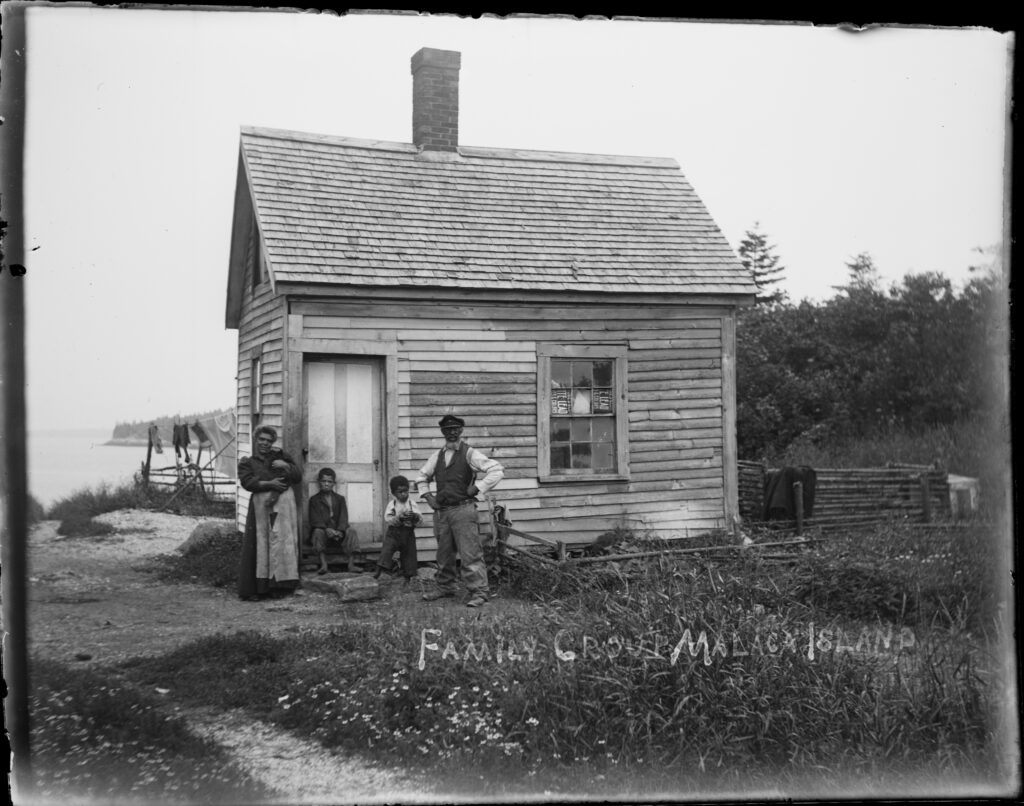Stay up to date with our newsletter
Explore Malaga Island
The History
By July 1, 1912, the community on Maine’s Malaga Island ceased to exist. The State of Maine had evicted the mixed-race community of fishermen and laborers in order to clear the small coastal island.
The mixed-race community was a source of controversy in the state; many people viewed the island as an ugly mark on the pristine beauty of Maine’s coast. After years of well-publicized legal battles, the state succeeded in removing the community of around forty people, committing eight to the Maine School for the Feeble Minded.
By the end of 1912, all visible traces of the community had disappeared – houses had been moved, and the cemetery had been exhumed.

The story of Malaga Island was explored in the Maine State Museum exhibit, Malaga Island, Fragmented Lives, which is now closed. But you can continue to explore the island’s history through the information provided below.

Malaga Island Educational Materials
For teachers and students who wish to delve deeper into the story of Malaga Island, the museum has developed a range of materials to facilitate in-depth exploration of the themes that the exhibit addressed. These themes include ethnicity, diversity, tolerance, environmental history, archaeology, civil rights, and social justice. These materials are designed for grades 6-12.
Lesson Plans
Lesson 1: Introduction to Malaga Island, Fragmented Lives, and Using Primary Sources
Lesson 2: Building Visual Literacy Using Images of Malaga Island
Lesson 3: Media Literacy, Citizenry, and Conflicting Accounts of Malaga Island
Lesson 4: Going Beyond Lizzie Bright and the Buckminster Boy: Malaga Fact vs. Fiction
Malaga Island’s Archaeological Record
In 1989, University of Southern Maine archaeologists began exploring the island, seeking physical evidence of the community that once called Malaga Island home. Everyday Lives: An Interim Report on Archaeological and Environmental Investigations of Malaga Island, Phippsburg, Maine provides a preliminary analysis of archaeological work on Malaga Island. This research included two field schools in the summers of 2006 and 2007 under the University of Southern Maine, resulting in over 56,000 artifacts and extensive laboratory analysis and study. The artifacts are now part of the Maine State Museum’s collection and available for research.
While the exhibit about Malaga Island was on view, Maine State Museum Chief Educator Joanna Torow sat down recently with University of Southern Maine archaeologists Rob Sanford and Nate Hamilton to get an inside look at their research on the island. View the video Archaeology on Malaga Island to learn more.
For information about the Malaga Island archaeological collection, contact Dr. Andrew Beaupré at the Maine State Museum at Andrew.Beaupre[at]Maine.gov or 207-287-6604.
